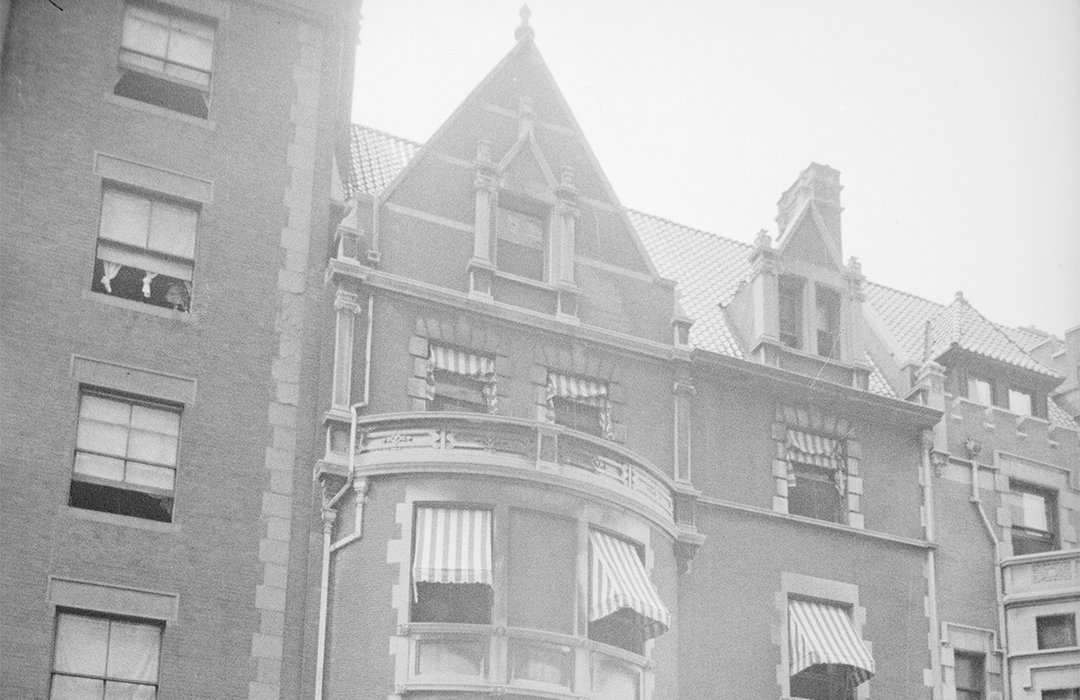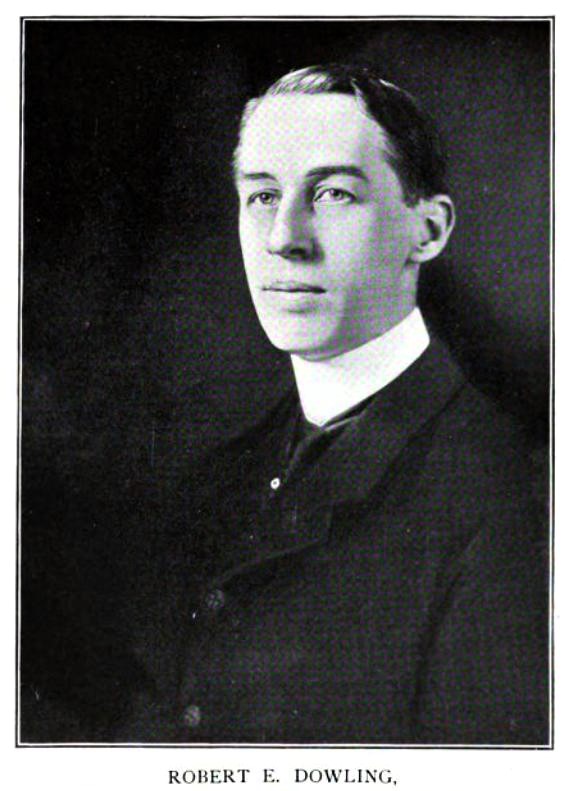
The Robert E. Dowling House – 332 West 83rd Street
by Tom Miller
Perhaps the most prolific Upper West Side architect of the late 19th century, Clarence Fagan True was successful enough to own his own development firm in the 1890s. In 1898 he designed a group of six houses that wrapped the southeast corner of Riverside Drive and West 83rd Street. Known for working in historic styles, True designed these in his personal take on the Elizabethan Revival.
Just east of the avenue, 332 West 83rd Street, like the rest of the row, was completed in 1899. Clad in red Roman brick above a rusticated limestone base, its entrance sat within a three-story bowed bay that provided a balcony to the fourth floor. True’s asymmetrical design culminated in a steep, slate-shingled roof interrupted by a pointed gable and picturesque dormer.
On May 20, 1900, an advertisement in the New-York Tribune described the “elegant new 5-story brick, bay window American basement dwelling, with extension; steam heat, electric lights, decorated; ready for immediate occupancy.” It was purchased by Robert Emmet Dowling and his wife, Minnetta Adele.
Dowling was a well-known real estate operator and financier. His father had been a Manhattan lawyer who traveled to California during the 1849 Gold Rush. Robert was born on October 21, 1866, in Mokelumne Hill, California, a town co-founded by his father. Six months later his parents brought him back to New York City. The Successful American recalled in January 1902, “they secured a residence on the bank of the Hudson River in what was then known as Bloomingdale, on the site of what is now a part of Riverside Drive at about One Hundred and Fifth Street.”
When her condition worsened, on June 4, Robert boarded a train with the little girl headed to New York City to get expert medical care.
By 1900, Dowling was a partner in the New York Realty Company. He was, as well, secretary and treasurer of the Manhattan Island Corporation, vice president of the Interstate Debenture Company, and a director of the Lincoln Trust Company. Highly involved in politics, he was president of the Tilden Club.
Robert and Minnetta had two children, Robert Whittle and Ruth Percival. Not long after moving into 332 West 83rd Street, Allen D. Dowling was born. The family’s country home was in Sharon Springs, Connecticut.
On May 29, 1906, Ruth, who was seven years old, “fell from a toy buckboard at her home, 332 West Eighty-third Street,” according to The New York Times, and broke her arm. The article noted, “The fracture was reduced by a physician.” Assuming there was nothing to worry about, the Dowlings went to their summer home. There, two days later, Ruth became ill. When her condition worsened, on June 4, Robert boarded a train with the little girl headed to New York City to get expert medical care. What no one knew was that she had contracted tetanus. Two physicians, Dr. E. B. Culby and Dr. William Jones were on the train and attempted to help. Tragically, it was too late. The article said, “She died as the train pulled into the Grand Central Station.”
Minnetta Dowling was active in high society. On February 26, 1910, for instance, The New York Times mentioned, “There was a bridge yesterday afternoon at the residence of Mrs. Robert E. Dowling, 332 West Eighty-third Street, for the benefit of the Japanese table at the fair at the Metropolitan Opera House.” Sadly, there would not be many more such functions in the Dowling drawing room. Minnetta died on August 18, 1911, at the age of 43. Her funeral was held in the parlor three days later.
Robert E. Dowling threw himself into business. He was now the president of the City Investing Company and, in 1913 was appointed the chairman of the State Workmen’s Compensation Commission. An expert in real estate finance, he was consulted repeatedly by the newspapers. On March 9, 1913, for instance, The Sun ran a full-page article about his views on city spending. And on November 3, 1918, after a lackluster period in real estate during the war, The Sun began an article with a long quotation from Dowling that stated, “From the standpoint of the investor I will say that not in my years in real estate have I seen stronger market bases.”
In the meantime, Robert Whittle Dowling was making a name for himself. An amateur athlete, on September 5, 1916, the 18-year-old became the first swimmer to encircle Manhattan Island. He managed the feat in 13 hours and 45 minutes. Two years later, he became engaged to Ethel F. Robertson. It seems to have been a good match. The New-York Tribune reported on April 14, 1918, that Ethel “is an accomplished horsewoman. Mr. Dowling is well known in the athletic world and holds the American record for long-distance swimming.”
An amateur athlete, on September 5, 1916, the 18-year-old became the first swimmer to encircle Manhattan Island.
Robert Emmett Dowling did not slow down. Little-by-little he added to his resume directorships in the City Bank Farmers Trust Company, the East River Savings Bank, the National City Realty Corporation, and the 270 Broadway Corp. In 1933 was elected to the board of the New York Life Insurance Company, as well.
At 11:30 on the night of March 16, 1943, Dowling suffered a fatal heart attack in the West 83rd Street mansion. In reporting his death, The New York Times noted, “A participant in some of the largest realty transactions in the New York field during the last forty years, Mr. Dowling always regarded as the most important event of his long career the erection of the thirty-two story City Investment Building at 55 Broadway.” That structure was the headquarters of his firm.
Dowling’s funeral was held in All Angels Episcopal Church on 81st Street and West End Avenue on March 19. Among the several hundred mourners present were former Mayor John P. O’Brien, Supreme Court Justice Charles C. Lockwood and other financial and business leaders.’
The following year the Dowling residence was converted to apartments. Somewhat surprisingly, the exterior was preserved almost exactly as Clarence True designed it.
Tom Miller is a social historian and blogger at daytoninmanhattan.blogspot.com



